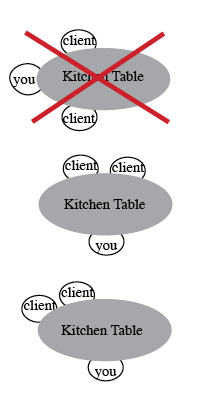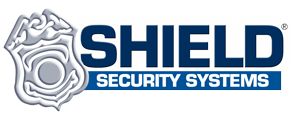Whether you’ve been in sales for six months, six years or even six decades, that little nervous flutter you feel as you prepare to deliver your structured sales presentation at a sales call will probably never escape you.
Will the customer say ‘yes’ or ‘no’ to your proposal? Or will you hear the standard reply, “I’ll think about it and get back to you.”
You can shore up your confidence, reduce the flutter and close more sales by relying on the kitchen table methodology. As part of your overall sales process, this approach steers sales presentations to the place where most people feel most comfortable — around the kitchen table.
Close More Sales at the Kitchen Table
Even before you arrive at your appointment, and especially once you do, a little finesse is in order. In this article, we discuss how to succeed every step of the way – and increase the likelihood of leaving the kitchen table with a signed contract in your hands.
Make a polite entry
Greet your customers (and we’ll assume there are two for this example) at the front door with a smile and a warm handshake. Immediately give them your business card to validate your name and status with the company.
Offer to remove your shoes as a courtesy and, if they decline, take them off anyway. Everyone appreciates good manners, especially when it comes to keeping their home clean.
Remember that it’s usually a little nerve-wracking for people to invite a stranger – or near stranger – into their homes. Ease the tension by complimenting the customers on something you see in the entryway, such as a rug, a lamp or a piece of furniture. If you believe (as many people do) that most people form an impression within the first 60 seconds, you’re likely to have started off on exactly the right foot (literally) by demonstrating your manners and congeniality.
Set the stage
 Take charge of your presentation right from the start by asking to sit at the kitchen table (although, if they offer a seat at the dining room table, kindly take the hint). While your goal is to conduct the consultation right in the heart of your customers’ comfort zone, explain that you need a solid surface for your sales presentation book – a reality that also should dispel any notion about sitting on chairs or couches in the family room or dining room, where there are bound to be more distractions.
Take charge of your presentation right from the start by asking to sit at the kitchen table (although, if they offer a seat at the dining room table, kindly take the hint). While your goal is to conduct the consultation right in the heart of your customers’ comfort zone, explain that you need a solid surface for your sales presentation book – a reality that also should dispel any notion about sitting on chairs or couches in the family room or dining room, where there are bound to be more distractions.
Before everyone settles in, say that it would be “great” if they could sit next to each other, with you seated across from them. This way, they will have an ideal vantage point of the presentation book.
The image to the right shows two options for the ideal set-up for your presentation, as well as one set-up you’ll want to avoid.
Present and Adjust
There is another reason you want to achieve the seating seating arrangement described above: You will have the opportunity to see both of their facial expressions at the same time – a critical point that will allow you to tailor your presentation, if need be, especially if one person is smiling at you in agreement while the other is looking away and shaking his head.
This arrangement also is superior to the one you want to avoid at all costs, shown to the right — one with your customers seated directly across or perpendicular to each other so that they can visually telegraph their reactions to your presentation while you’re talking.
Remember that as the person who has something to sell – and someone who aspires to close more sales – you need every advantage you can muster. An optimal seating arrangement gives you – and only you – a minute-by-minute appraisal of how the presentation is proceeding vis-a-vis facial reactions. This is one of the most simple things you can do to help you close more sales.
Proceed like a pro
Once you’re set up for success at the kitchen table, share your plan for the consultation like the confident and conscientious professional you are. Explain that your fundamental goal is to educate them about, for example, home alarm systems.
Then inform them that your presentation will take about 12-15 minutes and that your total consultation should take about 45 minutes. Also assure them that, of course, you will stay as long as it takes to answer all of their questions. To continue the home security example, next tell them that you will conduct a security evaluation of their home – and, to underscore your planning skills, show them a field sketch sheet with their name and address already on it. Say that you will conclude your consultation with a review of the system design and the corresponding investment.
After the Moment of Truth arrives, be sure to credit your sure touch – and the kitchen table methodology – for helping you close more sales. Keep this approach in mind and learn more about developing a smart business model in our free e-book below.

